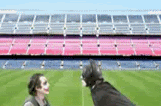Blaster wrote:Also, what are the numbers at the top of the page?
Graymouser is correct on both counts. Each studio had a different style of timing sheet, but they are similar enough that I can say that the first number is probably the episode number (Episode 9) and the second number is the "cut" or sequence number. Episodes were divided up into cuts in the planning stage, so that series of cels relating to the same scene and perspective could be worked up in a single batch. In some cases, the sequence would be broken up into two cuts, with a cut to another character in the middle, and then the rest of the first character's action. In some cases, then, you'll see two cut numbers on the timing sheet (and layout, and gengas, etc.). In other cases (as with TnN and Tonde Buurin) the cut takes the same number no matter how often it's divided up.
It would be hard to tell what's what in your case without screening the episode. But if you screen the first part of Episode 9 of your show, you'll find Cut 28 pretty quickly, as episodes typically have 280-320 cuts total.
Below that, there's the animation directions to the douga artist, and from the latter to the cel painters and the cameramen. The thin columns on the left are the key animator's directions, using the numbers of the gengas and little dots or slashes to show where an inbetweener should come in for continuity.
The wider columns to the right of these are the numbers of the dougas and show how they should be filmed. In between, in the wider column, are the words of the dialogue spoken by the characters in this scene. (You've got two characters talking, as you can see from the B and E layers, which must be the mouth layers, and so you have a kanji indication circled before each one to show who's talking.)
If there were any special camera instructions, they would be indicated farther to the right (e.g., fades, zooms, pans, etc.).
I don't know what "5 + 0" means at the top, but I think it has to do with how many frames represent a second of the final product. Can anyone clarify this point.

